Power-hungry displays are not the most efficient medium for connecting battery-powered portable, wearable, and iot devices. As a result, low-power audio is fast becoming a more popular alternative. In this design solution, this article reviews Class D digital audio amplifiers and discusses the limitations of some current solutions, then introduces a cleverly packaged IC that can quickly deliver high-quality audio for these applications with minimal configuration.
introduce
"Video Killed the Radio star" - The Buggles' hit record of o979 tells the story of the death of audio entertainment, when audio was delivered via a wireless AM/FM radio receiver (Figure 1), And video (in the form of television) is starting to take hold. Back then, the band couldn't have imagined that a portable electronic device would allow us to instantly stream any movie, or allow us to record our daily lives with near movie studio quality video. However, high-quality video is best appreciated when accompanied by equally high-quality audio, and it can be said that in the intervening years, the user's audio experience has been unforgivably neglected. Audio has become the "weak link" that enables countless complex functions on portable electronic devices such as wearables, AR/VR and compact iot products. Users have become accustomed to not having high expectations for audio from these devices. "After all, it's just a phone," is a mantra that's been repeated over and over and has become all too familiar.

Digital Class D amplifier
Due to their high efficiency and excellent EM1 performance, filterless, digital input Class D amplifiers have become the accepted standard for driving speakers in consumer electronics devices. This is because they are not affected by the board design issues associated with their analog counterparts, especially signal integrity. Single-channel digital Class D amplifiers can be placed in remote locations on the board to minimize wiring for high-current battery and speaker load connections.
These amplifiers do not require the DAc and line drivers required for analog input Class D designs. As a result, space and system costs fall and designs become simpler. Many Class D amplifiers accept pulse code modulated PCM(or I 1s) data, which requires three wires: BCLK, LRCLK, and DIN (Figure 1). The PCM data format does not require up-sampling of data on the modulator or application processor to provide stereo data.
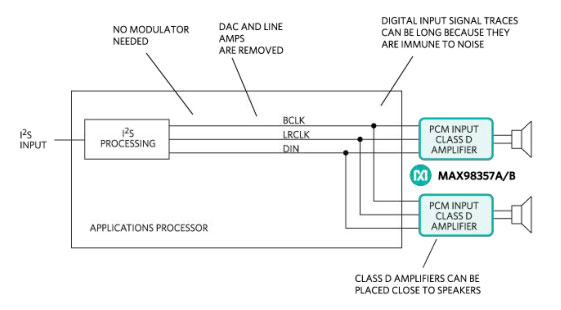
Simpler and smaller
The IC shown in Figure 2 addresses all aspects of these design problems and has the added advantage of being simpler and smaller, as well as a lower-power solution.
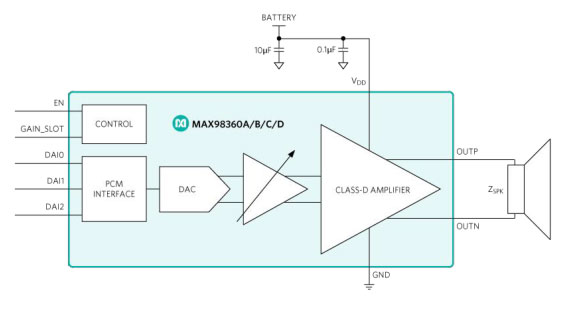
The amplifier offers several power advantages over other Class D amplifiers. It can operate with only one supply voltage (2.5V to 5.5V). It can accept input logic voltage levels as low as 1.2V (meaning that no level converter is required), but is robust enough to withstand input voltages up to 5.5V. It also operates at a high efficiency of 92%, reducing battery consumption.
Another beneficial feature is that if the DAIn pin remains low, the IC automatically goes into ultra-low power mode, where it consumes a tiny standby current of 1.5μA. This greatly reduces power consumption and is extremely beneficial in applications where there is no host GPIO available to control EN pins. However, it is important to note that the EN pin can be used to achieve an additional power-saving effect by placing the IC in the off mode, where it consumes only 15nA of current.
Conveniently, it also has a very fast 1ms startup time (four times faster than similar Class D amplifiers), which allows it to wait in ultra-low-power 1.5μA standby mode, even when connected to an LRA haptic driver.
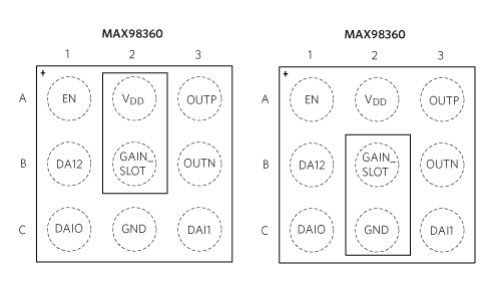
Table 1. I2S/ Left-justified gain Settings for the MAX98360.
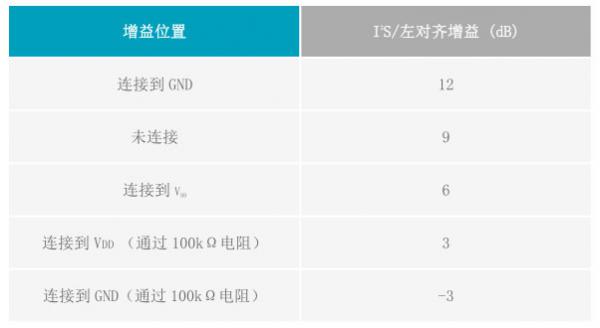
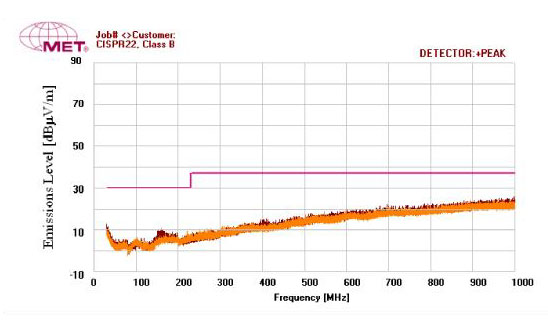
With audio interfaces rapidly becoming a common feature of battery-powered wearables, iot devices, and other types of small portable electronic devices, designers are looking for simpler and more cost-effective ways to add high-quality audio to their devices. In this design solution, we review the difficulties of integrating certain Class D amplifiers into space-constrained applications. We can conclude that the new flexible low-power digital input Class D audio amplifier generates "plug and play" simplicity for the task of integrating audio into any type of electronic device, making it ideal for portable devices, wearables, and iot devices. In addition to a 9-pin WLP package, the MAX98360 is also available in a 10-pin FC2QFN package.
免责声明: 本文章转自其它平台,并不代表本站观点及立场。若有侵权或异议,请联系我们删除。谢谢! Disclaimer: This article is reproduced from other platforms and does not represent the views or positions of this website. If there is any infringement or objection, please contact us to delete it. thank you! |


